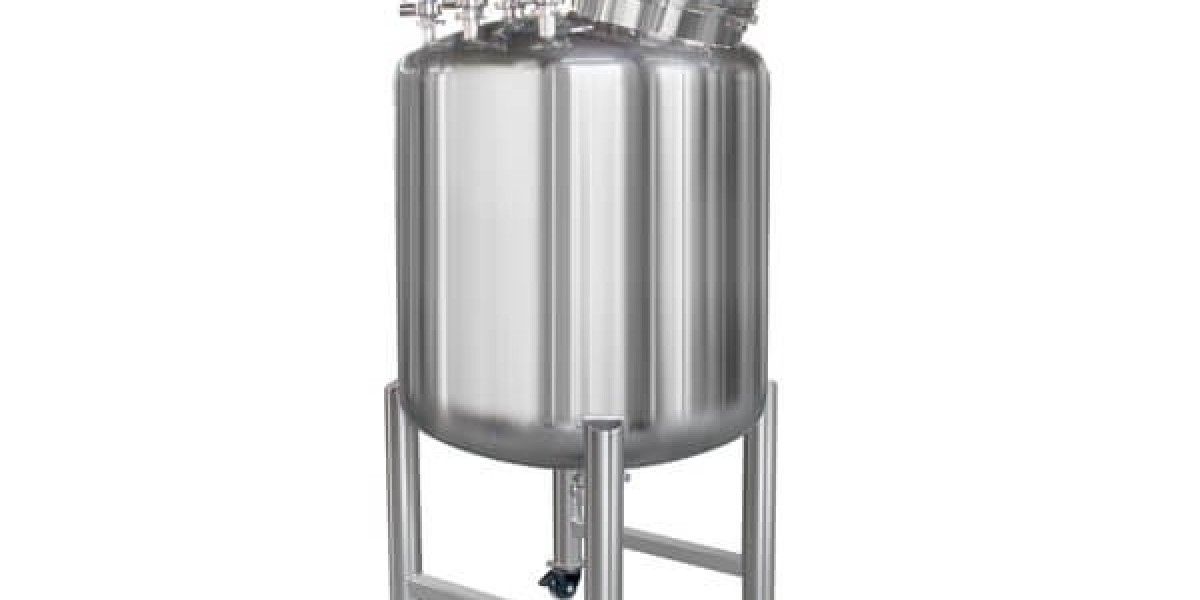Industrial mixing tanks are essential in various manufacturing processes, including food production, pharmaceuticals, chemicals, and cosmetics. These tanks help blend, emulsify, and homogenize different substances to ensure consistency and quality. Whether you are new to industrial mixing or looking for a reliable solution for your production needs, understanding how these tanks work and their various applications can be beneficial.
What Is an Industrial Mixing Tank?
An industrial mixing tank is a vessel designed to mix liquids, solids, or gases to create a uniform mixture. These tanks come in different shapes, sizes, and materials, depending on their intended use. The primary goal of a mixing tank is to ensure even distribution of all components to achieve the desired chemical or physical properties.
The effectiveness of a mixing tank depends on several factors, such as tank design, the type of mixing mechanism, and the properties of the substances being mixed. Some mixing tanks operate with agitators, while others use impellers, paddles, or propellers to create movement within the liquid.
Types of Industrial Mixing Tanks
Industrial mixing tanks vary in design and function, depending on the specific industry requirements. Some of the most common types include:
Stainless steel mixing tanks – These are widely used in industries requiring high hygiene standards, such as food and pharmaceuticals. Stainless steel is corrosion-resistant and easy to clean, making it an ideal choice for processing sensitive products.
Plastic mixing tanks – These are commonly used for handling chemicals that may react with metal. They are lightweight and cost-effective, making them suitable for industries dealing with acids, bases, and other reactive substances.
Jacketed mixing tanks – These tanks are designed with an outer layer that allows heating or cooling of the contents. This feature is crucial in industries where temperature control is essential, such as cosmetics and food processing.
Portable mixing tanks – These are mobile tanks that can be moved around within a facility. They are useful for small-scale operations or when flexibility in production is required.
High-pressure mixing tanks – These are used in processes that involve pressurized gases or require high mechanical forces for effective mixing. They are common in the chemical and pharmaceutical industries.
Key Components of an Industrial Mixing Tank
A mixing tank consists of several components that work together to ensure efficient mixing. The most important parts include:
- Tank body – The main vessel that holds the materials to be mixed.
- Agitator or impeller – This component rotates or moves within the tank to create fluid motion.
- Baffles – These are vertical plates placed inside the tank to prevent vortex formation and improve mixing efficiency.
- Motor and gearbox – These control the speed and movement of the agitator.
- Control system – Some mixing tanks come with automated control panels for monitoring temperature, speed, and mixing time.
Each component plays a crucial role in determining the efficiency and effectiveness of the mixing process.
Applications of Industrial Mixing Tanks
Industrial mixing tanks are used across various industries to perform different functions. Some of the key applications include:
- Food and beverage production – Used to mix ingredients for products such as sauces, dairy products, beverages, and confectionery.
- Pharmaceutical manufacturing – Essential for blending active ingredients and excipients to produce medicines and ointments.
- Chemical processing – Used to mix, dilute, and react chemicals for industrial use.
- Cosmetic production – Helps in creating lotions, creams, and shampoos with uniform texture and consistency.
- Paints and coatings industry – Ensures even distribution of pigments and binders in paint formulations.
How to Choose the Right Mixing Tank
Selecting the right industrial mixing tank depends on various factors, including the type of materials being mixed, production volume, and industry requirements. Here are some key considerations when choosing a mixing tank:
Material compatibility – Ensure the tank material is suitable for the substances being processed. Stainless steel is ideal for food and pharmaceuticals, while plastic may be better for certain chemicals.
Tank size and capacity – Choose a tank that can handle the required production volume without overloading or wasting materials.
Mixing mechanism – Different mixing methods, such as impellers, paddles, or propellers, work better for different substances. Select the right agitator based on the viscosity and nature of the materials.
Temperature control needs – If your process requires precise temperature regulation, a jacketed mixing tank with heating or cooling capabilities may be necessary.
Automation and control – Consider whether you need a fully automated system with sensors and programmable controls for efficiency and consistency.
Ease of cleaning and maintenance – A tank that is easy to clean and maintain will help improve hygiene and prolong the equipment’s lifespan.
Maintenance and Cleaning of Industrial Mixing Tanks
Proper maintenance and cleaning of mixing tanks are crucial to ensuring their longevity and efficiency. Here are some maintenance tips:
- Regular inspection – Check for leaks, corrosion, and wear on agitators and seals.
- Cleaning schedule – Follow a strict cleaning routine, especially in industries like food and pharmaceuticals where hygiene is critical.
- Lubrication of moving parts – Ensure motors, gearboxes, and bearings are properly lubricated to prevent excessive wear.
- Calibration of sensors and controls – Regularly calibrate automated systems to maintain accurate operation.
By following these best practices, you can enhance the durability and performance of your industrial mixing tank.
Conclusion
Industrial mixing tanks are indispensable in many industries, providing efficient and consistent mixing of liquids, solids, and gases. Understanding the different types of mixing tanks, their components, and their applications can help businesses choose the right equipment for their specific needs. Proper maintenance and cleaning are also essential to ensuring long-term reliability and performance.
Whether you are setting up a new production line or upgrading your existing equipment, investing in the right industrial mixing tank can significantly improve your processing efficiency and product quality.



